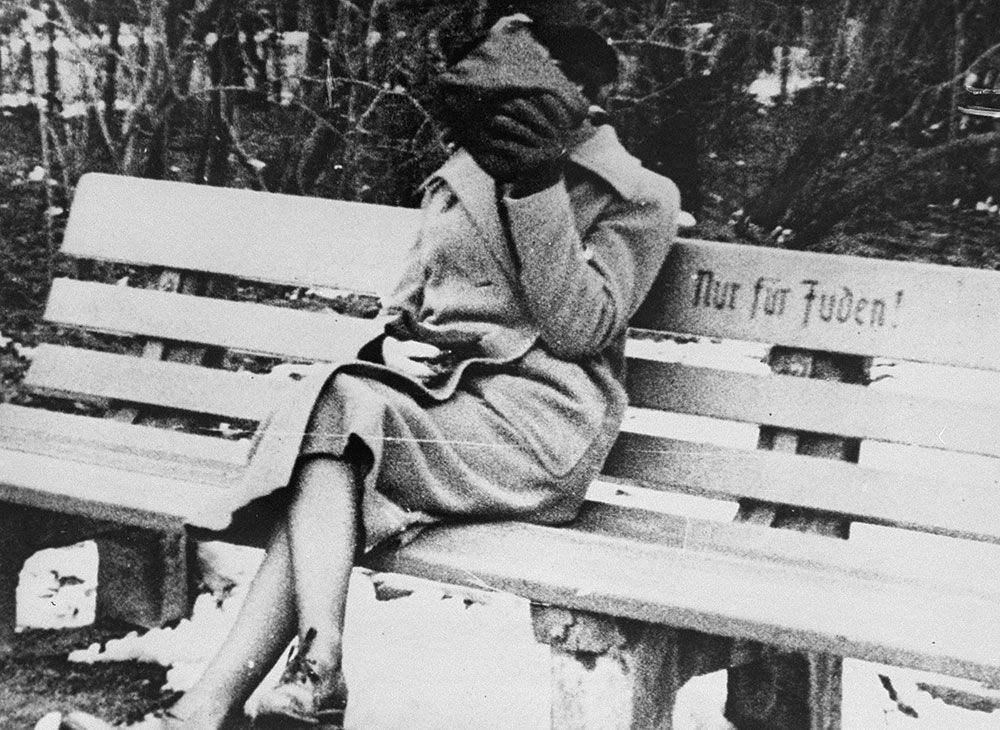This activity will better acquaint students with the ways in which individuals rescued others, were rescued, or resisted during World War II. Students will divide into groups and research one interviewee in the Museum’s Voices on Antisemitism series. While the rest of the class serves as journalists and reporters at a press conference, each group will present what they have learned about their individual and the work that he or she has carried out. The journalists and reporters will then ask questions.
Faiza Abdul-Wahab
 Khaled Abdul-Wahab, a Tunisian who rescued two dozen Jews during the Holocaust, is the first Arab person to be nominated for the designation of Righteous Among the Nations. Faiza Abdul-Wahab reflects here on her father's life and legacy. Learn more
Khaled Abdul-Wahab, a Tunisian who rescued two dozen Jews during the Holocaust, is the first Arab person to be nominated for the designation of Righteous Among the Nations. Faiza Abdul-Wahab reflects here on her father's life and legacy. Learn more
Daniel Craig
 Actor Daniel Craig is perhaps most famous for his portrayal of Agent 007 in the James Bond movies. But his latest film, Defiance, is based on the true story of the Bielski brothers, who led a resistance against the Nazis during the Second World War. Learn more
Actor Daniel Craig is perhaps most famous for his portrayal of Agent 007 in the James Bond movies. But his latest film, Defiance, is based on the true story of the Bielski brothers, who led a resistance against the Nazis during the Second World War. Learn more
Gerda Weissmann Klein
 Gerda Klein survived the Holocaust and was liberated by an American soldier who she eventually married. Here, Klein discusses her understanding of hatred and antisemitism today. Learn more
Gerda Klein survived the Holocaust and was liberated by an American soldier who she eventually married. Here, Klein discusses her understanding of hatred and antisemitism today. Learn more
Johanna Neumann
 Johanna Neumann speaks with gratitude and affection of the family who rescued her during the Holocaust. Yet her fondness for them exists alongside some profound contradictions. Learn more
Johanna Neumann speaks with gratitude and affection of the family who rescued her during the Holocaust. Yet her fondness for them exists alongside some profound contradictions. Learn more
Robert Satloff
 Soon after September 11, 2001, Robert Satloff moved to Rabat, Morocco, to search for Arab heroes during the Holocaust. Listen to him explain why. Learn more
Soon after September 11, 2001, Robert Satloff moved to Rabat, Morocco, to search for Arab heroes during the Holocaust. Listen to him explain why. Learn more
Tracy Strong Jr.
 In 1940, Tracy Strong left the relative safety of America to help students displaced by the war in Europe to continue their studies. While uncomfortable with the title "hero," Strong's efforts to sustain an educational safe haven ultimately proved life saving for many young Jews. Learn more
In 1940, Tracy Strong left the relative safety of America to help students displaced by the war in Europe to continue their studies. While uncomfortable with the title "hero," Strong's efforts to sustain an educational safe haven ultimately proved life saving for many young Jews. Learn more
Methodology
- Divide students into five groups.
- Assign a podcast episode to each group.
- Students will research the person assigned to them, paying close attention to the person’s experiences during the Holocaust.
- Students should consider who the individual discussed is, where he or she grew up, where this person lives now if he or she is still living, what his or her motivation or memory of rescue and resistance is, and what methods this person uses to carry out his or her work, either of rescue and resistance or of educating others.
- After completing their research, students should write a 3-5 minute speech in which they present what they have learned about the person assigned to them.
- While each group presents, the rest of the class should develop questions to ask in their roles as journalists and reporters.
- After each presentation, the audience should be given a chance to ask their questions and the group presenting should use the resources they have collected to best answer each question.
Recommended Research Resources
Museum Resources
- Resistance During the Holocaust (Educational pamphlet exploring examples of armed and unarmed resistance by Jews and other Holocaust victims.)
Holocaust Encyclopedia articles:
- Antisemitism
- Armed Jewish Resistance: Partisans
- Flight and Rescue
- Jewish Aid and Rescue
- Jewish Uprisings in Ghettos and Camps, 1941-1944
- Jews in North Africa: Oppression and Resistance
Additional Online Resources Related to Rescue and Resistance
- Yad Vashem Resource Center (Provides in-depth information about the Holocaust using sources from the Yad Vashem Archives.)

